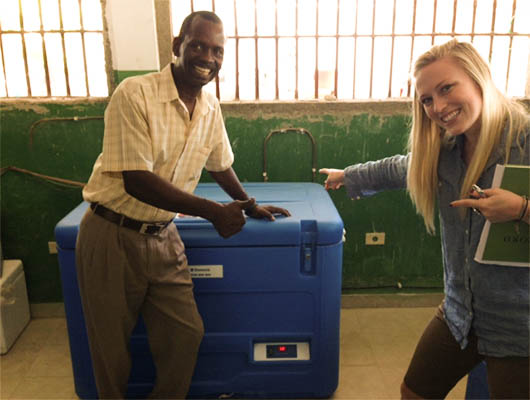Off-Grid Vaccine Refrigerators Improve Immunization

Most vaccines are heat-sensitive and must remain in a cool, controlled environment. However, this is easier said than done when the vaccines must be transported over a great distance, arriving at a remote location with frequent power outages or no electrical grid at all.
Introducing the direct-drive solar refrigerators: a solar-powered fridge that keeps vaccines cool for long periods of time without relying on gas or kerosene. Off-grid refrigerators were introduced in the 1980s in areas without electricity, but recent technological improvements have made them more efficient and accessible than ever before.
The new technology, sponsored by PATH and the World Health Organization, has “direct drive” technology that uses the sun’s energy to freeze water, creating an ice “bank” that the fridge can tap into during the nights and cloudy days.
A direct-drive solar refrigerator could prove to be invaluable to developing countries. Immunizations would be more stable and more accessible, meaning people would get treated faster.
But the fridges are not the simplest of innovations—any given country will need a long-term plan upon making the initial investment for semi-regular maintenance and repair. On top of that, an experienced professional would have to install the fridge to ensure it is done correctly, and then train local technicians to maintain and repair them.
Despite the drawbacks, the direct-drive solar refrigerator is already working. In the Philippines, a solar refrigerator called the Sure Chill is storing vaccines for longer than previously possible, helping rebuild the cold chain infrastructure after the typhoon in 2014. The Sure Chill fridges uses solar and water power and can run without electricity for up to 10 days. These fridges have a big price tag, about $2,600 each, but are already proving to be extremely worthwhile.
– Hannah Resnick
Sources: Alternative Energy, Science Dev, WHO
Photo: Flickr
